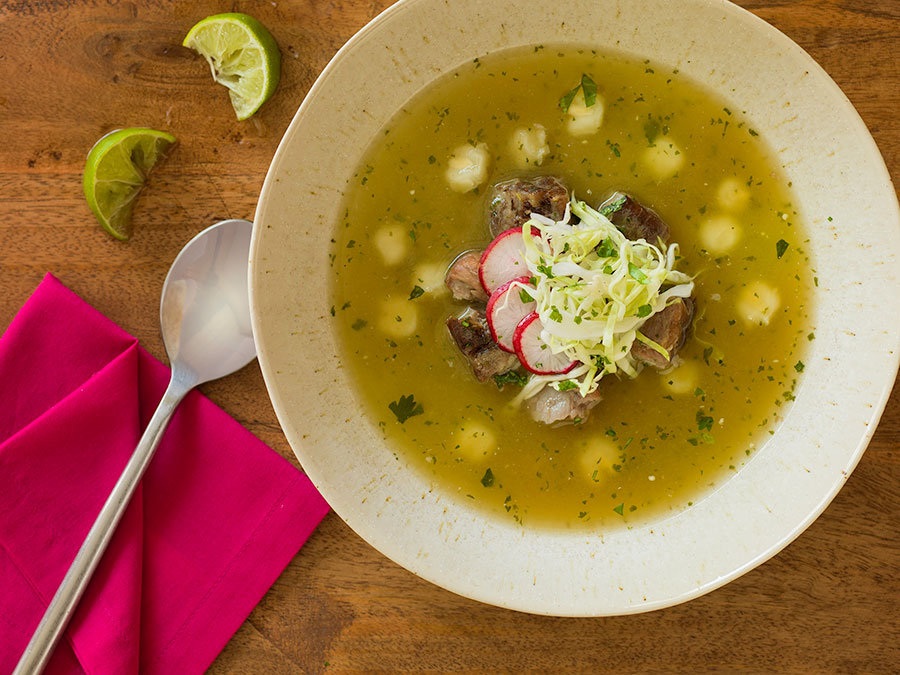Pozole comes in many varieties: rojo, verde, blanco, chicken, pork and human… er, gross. (Yup, I did some checking.) Looks like pozole has quite a long history. In pre-Columbian times, the Aztecs thought the gods made people from masa, and corn was sacred. So when they did sacrifices they used the leftovers with the hominy and shared it with the population as a sacred meal. Obviously, when the Spaniards showed up, they were disgusted and outlawed the practice and pork was substituted for people. Humans rejoice — pigs, not so much.
Now that I’ve whetted your appetite, let me tell about my version.
The first time I had pozole it was a chicken rojo version cooked in a slow-cooker. I wouldn’t say I’m anti-crockpot, but I don’t own and don’t feel the need to buy one. Let’s just say that after the first pozole I wasn’t in a hurry to go out and find more (I wasn’t quite as curious about food back then).
Years later, I went to a restaurant with a pozole special. I passed but my friend ordered it. When his soup arrived it was the complete opposite of what I expected. Instead of a thick, red stew with chunks of chicken and hominy, it was a clear consommé-style broth with a hint of green in a wide, shallow bowl with hominy and a center pile of tender pork topped with sliced radish and cabbage. I immediately ordered a bowl for myself and was not disappointed. I think I went back four or five times in the next two weeks for the soup.
Unlike most of my recipes, which are my versions based on a variety of different samplings, this pozole is the best rip-off of that restaurant I could manage. I don’t feel guilty, as the restaurant is gone but the flavors live on.
The pork stock and roasted pork shoulder can be made days ahead of time. If you can find neck bones for the stock, the meat that will fall off the bones is really tender and can be used in the soup instead of the roasted pork shoulder.

Pozole
Ingredients
- 8 cup pork stock
- 1 lb roasted pork shoulder chunked
- 0.5 cup loose cilantro leaves
- 2 hatch chilis or 1 poblano skinned and seeded
- 1 can hominy
- Sliced radishes for garnish
- Shredded cabbage for garnish
Instructions
- Combine chilis, half the cilantro, and 1 cup stock in a blender and blend until smooth. Pour into a pot and add the rest of the stock. When It’s just about to boil, throw in pork chunks and hominy reduce the heat to low.
- To serve, spoon soup into individual bowls and garnish with sliced radishes, shredded cabbage and remaining cilantro.
